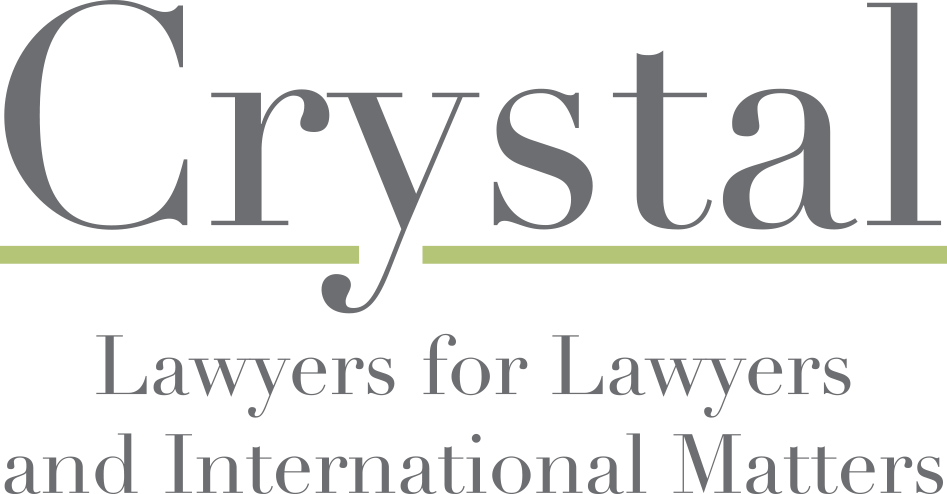

by Francesca Giannoni-Crystal & Allyson Haynes Stuart
I.Introduction
The Internet-of-Things (IoT) (or internet-of-everything as it is often interchangeably called[1]) is officially “the next big thing.” The growing proliferation of connected devices has far-reaching implications for consumer privacy and security at the same time that it promises to ease every-day life and increase health and safety. This year’s Consumer Electronics Show (CES) featured everything from smart washing machines that will tell their owners when they need to buy detergent, to connected changing tables that will keep parents apprised of the weight of their babies’ dirty diapers.[2] The age of smart homes is upon us, with alarm systems, air conditioning units, keyless entries and sprinkler systems all talking to each other – and to their owners.
At present, the news is more technological than legal. Nonetheless, the IoT triggers some worrisome legal issues, including: data collection, data security, invasion of privacy, bandwidth, and copyright.[3] The issues are imposing because of the potential magnitude of the phenomenon. Very little explicit regulation on the IoT exists and there is confusion about which existing laws should apply to the IoT. Since the IoT is likely to grow exponentially in the next few years,[4] these legal issues should be tackled now.[5] This is particularly true for the two legal issues on which we will focus in this article: privacy and data protection.
II.The IoT: A Definitional Problem
The first problem we encountered with the IoT is definitional.[6] In fact, there is no set definition of the IoT.
Read the full article: Francesca Giannoni-Crystal & Allyson Haynes Stuart, The Internet-of-Things (#IoT) (or Internet of Everything) – privacy and data protection issues in the EU and the US, Information Law Journal, Spring 2016, volume 7 issue 2 – download it at this page: http://apps.americanbar.org/dch/committee.cfm?com=ST230002
—–
Endnotes
[1] We will use the two terms as synonyms, according to the general usage, however, according to some experts, “Internet-of-Things” and “Internet-of-everything” are not the same thing. In her blog reporting on the annual conference of Cisco held in San Francisco in 2014 – Noelle Knell explains the difference between the two concepts. Reporting the statements of CISCO’s Internet of Things Vice President Tony Shakib, the distinction of the two concepts is drawn as follows:
The internet of things … is simply the connectivity – the infrastructure that is established in order for Internet-connected devices to interoperate, while “[t]he internet of Everything … involves three additional components. The second component is the data that is generated by connecting such a vast web of things … The third piece is the smart applications used to solve public-sector problems, or the management layer. The final piece is the application enablement. … All four layers together are the Internet of Everything” Noelle Knell, Cisco Live: Internet of Things vs. Internet of Everything, http://www.govtech.com/network/Cisco-Live-Internet-of-Things-vs-Internet-of-Everything.html.
Based on this specification, because this article does not deal with connectivity issues, but with privacy issues, it would probably be more correct to talk about “Internet-of-Everything” but we give in to the buzzword and we do not draw a distinction.
[2] Roger Cheng, Oh poop. Baby tech rattles a dad to be, CNET (Jan. 10, 2016), http://www.cnet.com/news/oh-poop-baby-tech-rattles-a-dad-to-be/.
[3] See Brian Wassom, Top 5 Legal Issues in the Internet of Things, Part 1: Data Security & Privacy (http://www.wassom.com/top-5-legal-issues-internet-things-part-1-data-security-privacy.html), Part 2: Data Collection and Invasion of Privacy (http://www.wassom.com/top-5-legal-issues-internet-things-part-2-data-collection-invasion-privacy.html) Part 3: Bandwidth (http://www.wassom.com/top-5-legal-issues-internet-things-part-3-bandwidth.html); Part 4: Copyright (http://www.wassom.com/top-5-legal-issues-internet-things-part-4-copyright.html); Part 5: Physical Safety (http://www.wassom.com/top-5-legal-issues-in-the-internet-of-things-part-5-physical-safety.html).
[4] Brain Wassom, Top 5 Legal Issues in the Internet of Things, Part 5 (supra note 3):
That would be as pointless as arguing against the tides; they will arrive regardless of anyone’s opinion. But there is plenty of room for foresight and advance planning, to ensure that the network of devices that already exists and that grows more complex every day is built in an intentional, prudent manner that maximizes its utility to society and minimizes its dangers.
[5] As IoT products continue to connect more and more aspects of our lives, it means more and more of our private information is being entrusted into the hands of IoT companies. In 2016, IoT companies will be forced to increase security features to ensure users’ private information is safer than ever before.
Chris Klein, 2016 predictions for IoT and smart homes, http://thenextweb.com/insider/2015/12/23/2016-predictions-for-iot-and-smart-homes/#gref.
[6] Roberto Minerva, Abyi Biru, Domenico Rotondi, Towards a definition of the Internet of Things (IoT), issued by IEEE Internet Initiative, iot.ieee.org, http://iot.ieee.org/images/files/pdf/IEEE_IoT_Towards_Definition_Internet_of_Things_Issue1_14MAY15.pdf.
